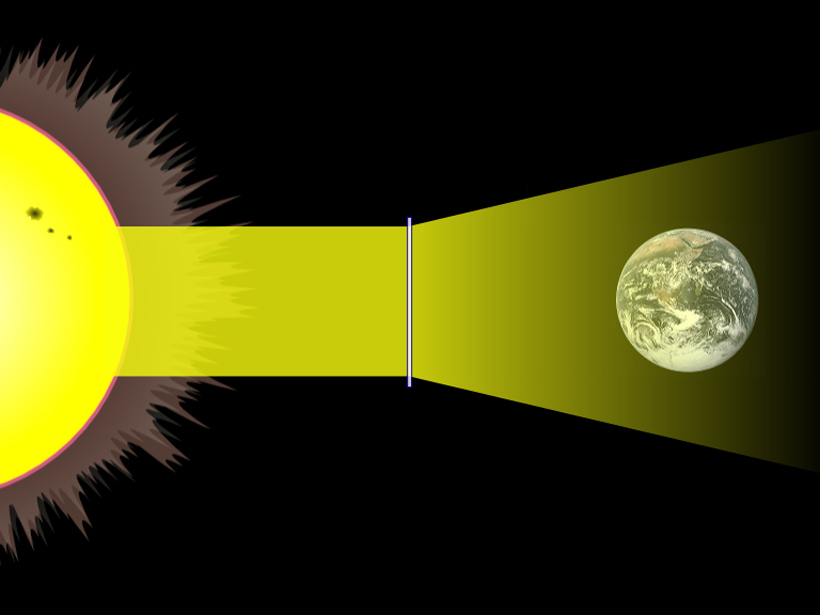To reduce the effects of global warming, scientists are exploring proposals for “geoengineering,” the deliberate modification of the climate or carbon cycle. One idea under discussion is to increase the amount of sunlight reflected back to space by injecting particles into clouds or the stratosphere. In the past decade, the Geoengineering Model Intercomparison Project (GeoMIP) has provided major advances in understanding the potential effects of this type of geoengineering.
Many participants left the meeting motivated to pursue ideas conceived at the workshop with their new collaborators.
To introduce interested researchers to the rapidly expanding, multifaceted field of geoengineering, the National Center for Atmospheric Research held an Early Career Summer School on geoengineering in July 2015 for 31 participants from around the world. For 2 days, the researchers were joined by an additional 16 geoengineering experts for the Fifth Annual GeoMIP Workshop. This interaction allowed the researchers to make contacts with leading scientists, learn about the latest discoveries in the field, and connect what they learned with their own research. Many participants left the meeting motivated to pursue ideas conceived at the workshop with their new collaborators.
The workshop revealed several key directions in geoengineering research, some continuing from the inception of GeoMIP 5 years ago and some that have recently emerged. Attendees expressed the need for better evaluation of climate models so that there is improved confidence in models’ ability to represent stratospheric aerosol microphysics and aerosol-cloud interactions. They also called for exploration of regional modeling or cloud-resolving model simulations to inform GeoMIP studies of two proposed forms of cloud modification: marine cloud brightening and cirrus thinning. The community is working toward moving from assessment of climate effects on temperature and precipitation to evaluation of climate effects in such areas as agricultural production and water scarcity. Workshop participants also encouraged closer interaction between the GeoMIP community and those who are contemplating field tests of geoengineering.
The community is working toward moving from assessment of climate effects on temperature and precipitation to evaluation of climate effects in such areas as agricultural production and water scarcity.
GeoMIP is an officially endorsed participant in the Coupled Model Intercomparison Project Phase 6 (CMIP6). Until that project is well underway, activities will focus on the GeoMIP Testbed, a new framework under which experiments can be proposed, explored with a small number of models, and then formally adopted into GeoMIP. The archive of output from past simulations is still being mined for innovative analyses. Many of these new results will be discussed at the Sixth Annual GeoMIP meeting, to be held at the University of Oslo in June 2016.
The National Center for Atmospheric Research Advanced Study Program, the National Science Foundation (NSF), and NSF grant AGS-1157525 funded the Early Career Summer School and the GeoMIP workshop. We wish to thank Scott Briggs, Paula Fisher, and Tara Torres for their generous assistance with making sure the workshops ran smoothly; Andrew Conley, Mike Mills, Linda Mearns, and Jón Egill Kristjánsson for serving as summer school visiting faculty; and Mark Lawrence for his careful review of this meeting report.
—Ben Kravitz, Atmospheric Sciences and Global Change Division, Pacific Northwest National Laboratory, Richland, Wash.; email: [email protected]; Alan Robock, Department of Environmental Sciences, Rutgers University, New Brunswick, N.J.; and Simone Tilmes, Atmospheric Chemistry Observations and Modeling Division, National Center for Atmospheric Research, Boulder, Colo.
Citation: Kravitz, B., A. Robock, and S. Tilmes (2016), New paths in geoengineering, Eos, 97, doi:10.1029/2016EO045915. Published on 17 February 2016.
Text © 2016. The authors. CC BY-NC 3.0
Except where otherwise noted, images are subject to copyright. Any reuse without express permission from the copyright owner is prohibited.

